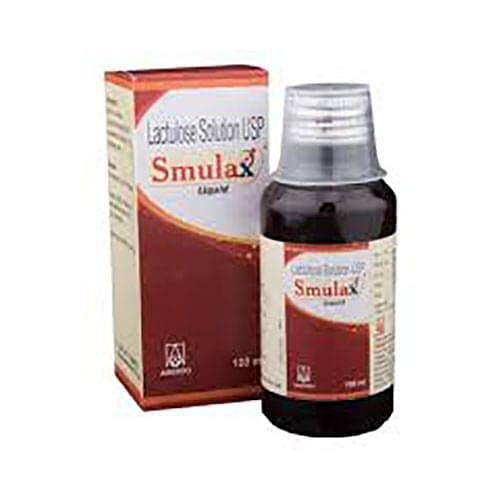
Laxivib Liquid
Manufacturer
Vibcare Pharma Pvt Ltd
Salt Composition
Lactulose (3.35gm/5ml)
Key Information
Short Description
Laxivib Liquid is a type of sugar used to treat constipation and hepatic encephalopathy. It is a laxative that makes your stool easier to pass by drawing water into your bowel.
Dosage Form
Oral Solution
Introduction
Laxivib Liquid can be taken with or without food. You should take this medicine as advised by your doctor. Use this medicine regularly to get the maximum benefit and try to take it at the same time(s) each day. Your dose may go up or down depending on how well it is working. Do not take more than you are advised to and if you miss a dose, do not take an extra one to make up for it. This medicine takes at least 48 hours to work. Talk to your doctor if you are still constipated after 3 days.
Directions for Use
Take this medicine in the dose and duration as advised by your doctor.Check the label for directions before use.Measure it with a measuring cup and take it by mouth.Shake well before use.Laxivib Liquid may be taken with or without food but it is better to take it at a fixed time
How it works
Laxivib Liquid works by drawing water into the intestine through osmosis.Which makes the stool soft and easier to pass
Quick Tips
Take Laxivib Liquid at bedtime as it requires 6 to 8 hours to show effect Take it exactly as prescribed by the doctor Take it at least 2 hours after taking other medicines as it may interfere with the absorption of other medicines Inform your doctor if you have a history of stomach disorders such as appendicitis or a blockage in your bowel Some healthy tips to prevent constipation from happening: eat more fiber in your diet, drink 8-10 glasses of water per day, exercise regularly at least 3 times per week, and do not hold in stool as that can worsen bowel issues
Related Medicines

Duphalac Enema Solution

Muvmend Oral Solution

Muvmend Oral Solution

Softee LC Oral Solution Sugar Free

Lactopin Oral Solution

Laxat Oral Solution

Smulax Liquid

Laxivib Liquid

Rapiduce Oral Solution

Amoniak 3.35gm Oral Solution
Frequently asked questions
How long does it take for Laxivib Liquid to work?
It typically takes 2-3 days to see noticeable benefits from the treatment. If you experience continued constipation after 3 days, consult your doctor.
What is Laxivib Liquid used for?
Laxivib Liquid is used to treat both infrequent bowel movements and hard, dry stools. It's also prescribed for patients with hepatic encephalopathy, a serious liver condition that can lead to confusion, tremors, and decreased consciousness.
Is Laxivib Liquid a laxative?
Yes, Laxivib Liquid is a laxative. It acts by softening stools by drawing water from the body into the large intestine. It also helps to reduce ammonia levels in the blood of patients with liver disease.
What are the side effects of taking Laxivib Liquid?
Common side effects of Laxivib Liquid include diarrhea, flatulence, nausea, vomiting, and abdominal pain. Diarrhea and abdominal pain can be more pronounced with higher doses. In these cases, it is advisable to reduce your dose. Flatulence may occur during the initial days of treatment and typically resolves on its own. Additionally, electrolyte imbalance can happen but is uncommon.
Is it okay to take Laxivib Liquid every day?
You should continue taking Laxivib Liquid as prescribed by your doctor, either until constipation subsides or for up to a week. For hepatic encephalopathy, treatment duration can be longer, potentially extending beyond months.
Who should not be given Laxivib Liquid?
Laxivib Liquid is contraindicated in individuals with known allergies to it or lactose intolerance (inability to process lactose). It's also essential to avoid its use in patients with galactosemia, a rare genetic disorder where the body struggles to process galactose.
Can I take other laxatives along with Laxivib Liquid?
Usually, one laxative is sufficient for treating constipation. However, if you require additional laxative support or need to administer another laxative in conjunction with Laxivib Liquid, do so only with your doctor's guidance as using multiple laxatives may increase the risk of side effects.
What if I take more than the recommended dose of Laxivib Liquid?
Exceeding the recommended dose of Laxivib Liquid can lead to abdominal pain, electrolyte imbalance, and diarrhea. These symptoms may persist for several days.
How should Laxivib Liquid be taken?
Take the prescribed amount using the measuring cup or spoon provided with the medicine. You can consume it with water or fruit juice if you find it overly sweet. Drinking plenty of fluids is crucial for optimal effectiveness.


